The number and variety of Labradoodle colors is dizzying. When Labrador and Poodle coat genetics collide, the range of possibilities is exciting and unpredictable. In fact, in addition to being one of the most popular designer dogs, Labradoodles are also one of the most colorful canines.
Labradoodles are offspring of the Labrador Retriever and a Poodle. Labradors are officially recognized in 3 standard colors and the Poodle comes in a whopping 10 standard colors. Together they can combine to make an array of different Labradoodle shades!
Changing Labradoodle Colors
To make things even more interesting, a Doodle puppy can be born one color, and change to another color as he grows up.
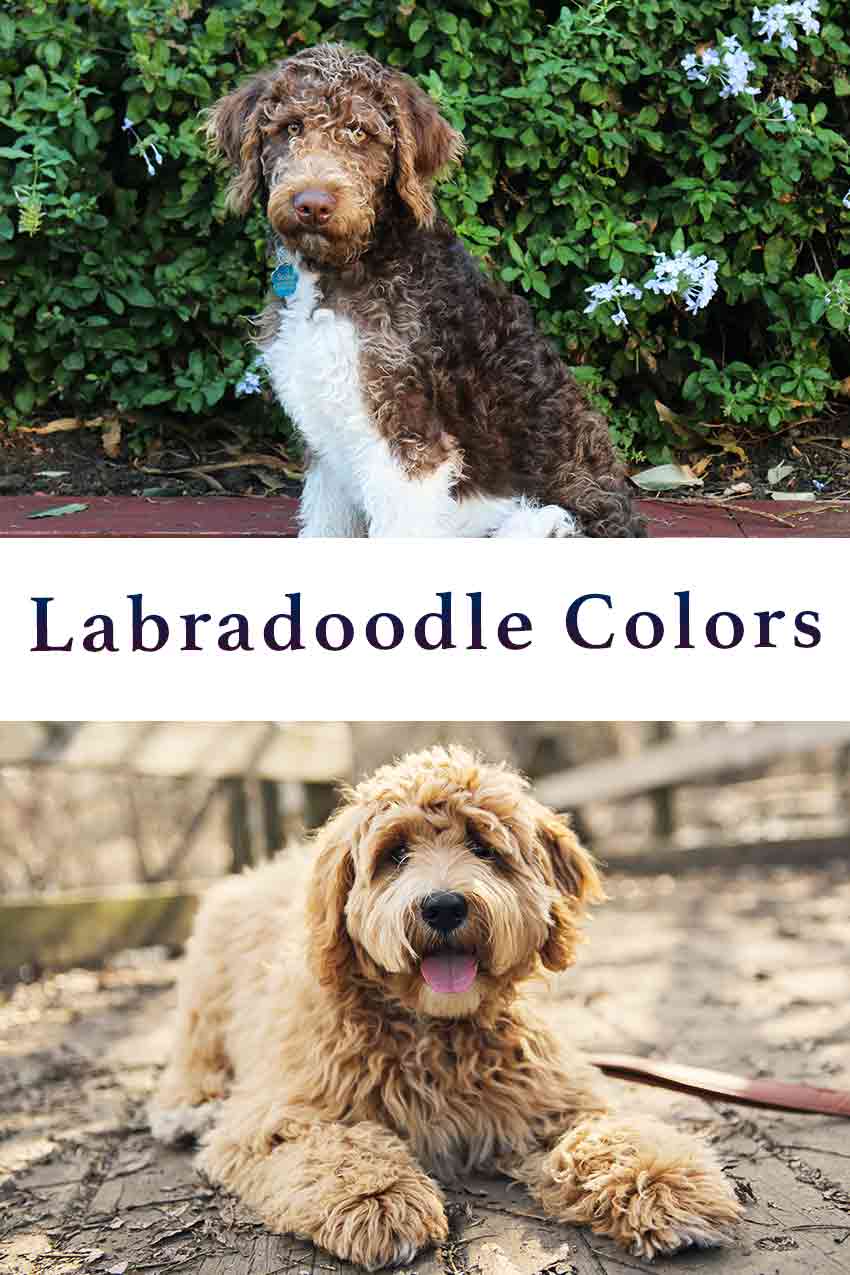
In fact, Labradoodles are notorious for having coats that change color or fade as they get older.
If you notice that the rich coat of your Labradoodle puppy is lighter or even a different color as he matures, this is due to the genetic influence of the Poodle.
Coat Color Genetics
Puppies get coat color genes from both parents.
Essentially, it’s how these two sets of genes interact with each other which determines the color of their coat.
Dominant vs Recessive Genes in Determining Labradoodle Colors
Canine coat color genes can be dominant or recessive.
For example, the most common gene for a black coat is dominant, and the gene for a brown coat is recessive.
When a dog inherits them both, the recessive brown gene is masked by the effect of the dominant black gene.
But they can still pass their gene for a brow coat onto their puppies. And if a puppy doesn’t have a more dominant coat color gene than brown, their coat will be brown.
This is how the Labradoodle offspring of a Lab and a Poodle can have so many surprising colors, which may not match either parent.
Pigments in Labradoodle Coats
Even though Doodles come in many colors, one of the most remarkable things about them is that they are all the result of just two pigments:
- eumelanin, which is black
- and pheomelanin, which is red.
The reason every dog isn’t either black or red though, is because the coat color genes they inherit modify how much of each pigment is made.
Let’s look at some of the many Labradoodle colors.
Black Labradoodles
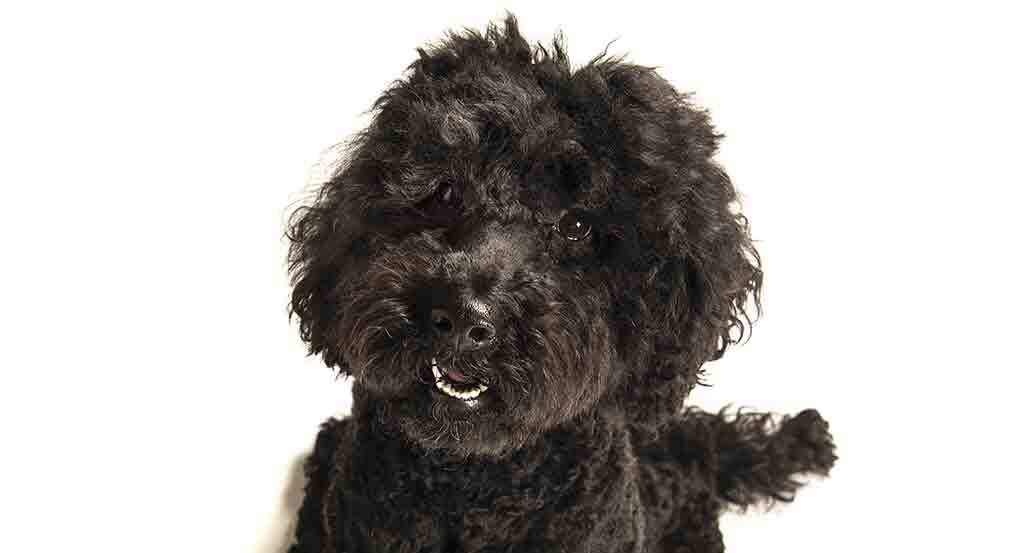
Black Labradoodles are one of the most popular colors of Labradoodle.
They are usually produced by a black Labrador Retriever and a black Poodle.
It’s not just their fur that is black either – their nose, eyes, and paw cushions are usually black too.
Some black Labradoodles have a white medallion or bib on their chest.
Chocolate Labradoodles
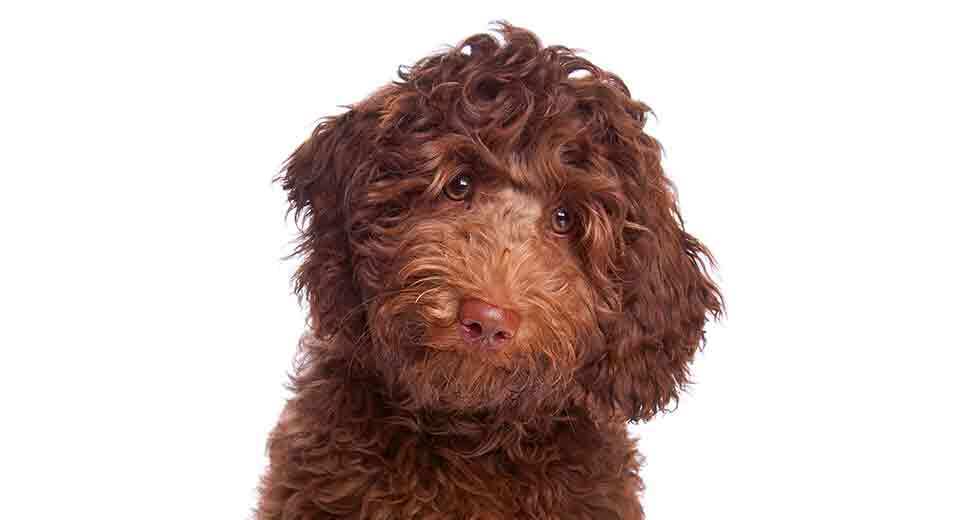
The chocolate Labradoodle sports a rich dark brown coat.
This is another popular coat color, but it’s one that can fade to either tan, grey or silver/parchment as these dogs become adults.
It’s also possible to see multi-colored brown Labradoodles.
Chocolate Labradors have a reputation for being more excitable, more agitated when ignored, and harder to train than yellow and black Labs.
It’s unlikely this is caused by the pigment in their coat, however. It’s more likely that since yellow and black Labs are traditionally more popular in service and working roles, breeders have created breeding lines that carry coat color genes for yellow and black, and carry other genes which make them calmer and more responsive to training.
Chocolate Labradoodle temperament will also be influenced by their Poodle parent, and whether their Lab parent was a show or a working dog.
Cream Labradoodles
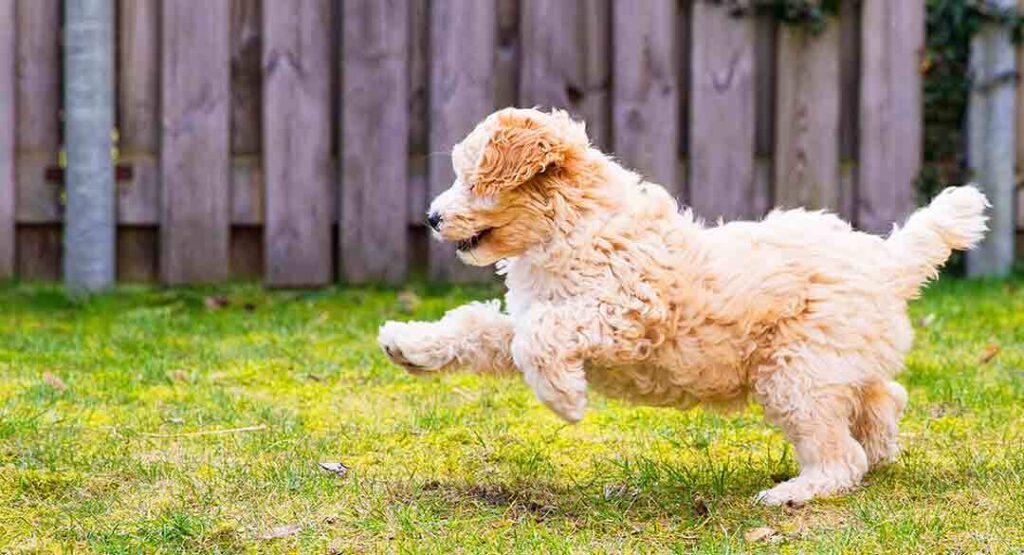
Not to be mistaken for white, thecream Labradoodleis slightly darker. They can be nearly yellow to almost white, and many hues in between.
Besides coming in a range of shades, cream Labradoodles can have light or dark colored noses and a spectrum of different eye colors.
Which means you rarely see the exact same combination twice, and each cream Labradoodle is particularly unique.
White Labradoodles
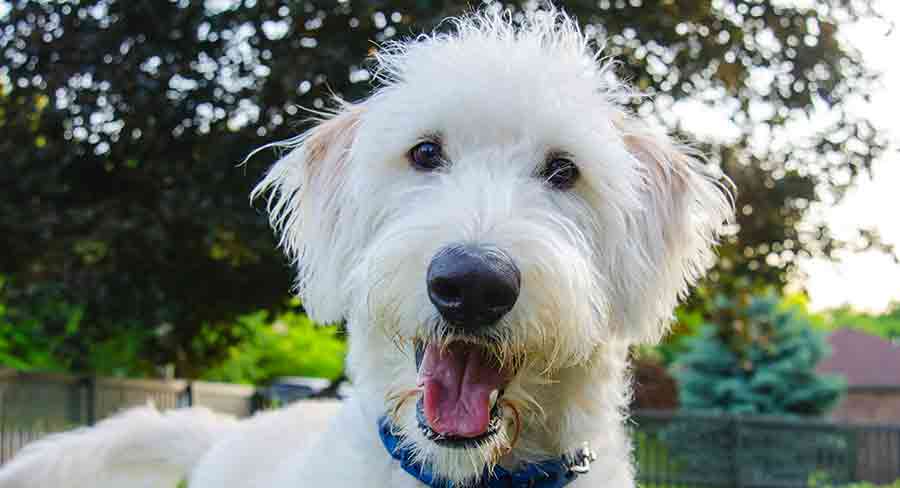
A white coat is the result of a lack of pigmentation in the fur.
It’s caused by the White Spotting gene. Although technically spotted, the spots of a white Labradoodle are simply so big that they overlap their entire body.
This isn’t the same as albinism. Albino dogs lack the genetic instructions for making pigment at all. White Labradoodles carry the instructions for making pigment, it’s just that they’re being overridden by the White Spotting gene.
The Australian Labradoodle Association of America (ALAA), which is trying to standardise the Labradoodle as a pedigree in its own right, refers to white Labradoodles as “chalk.”
These dogs should have black or rose nose pigment.
Golden Labradoodles
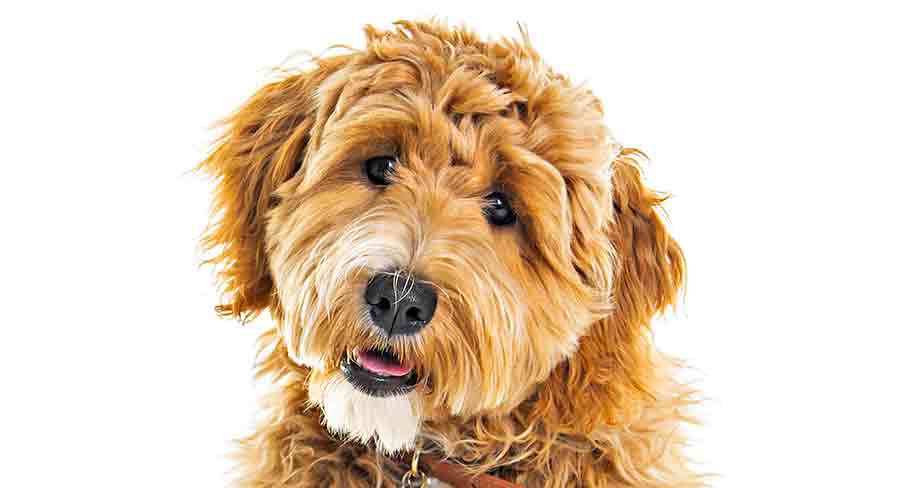
The golden Labradoodle coat is also referred to as apricot because they are often the color of the inside of a ripe apricot fruit.
This shade can range from light to dark orange-gold.
A golden Labradoodle’s coat may change as they grow older.
Noses are usually black.
Mating a mating a yellow Labrador with an apricot Poodle is one way of getting a golden Labradoodle.
Red Labradoodles
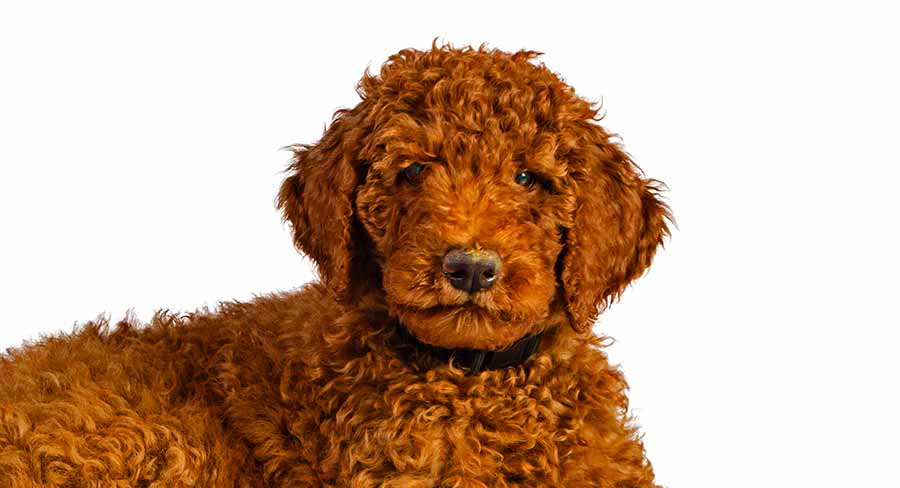
Red Labradoodles are a deep rich mahogany, thanks to the red pheomelanin pigment.
The red coat gene is recessive, meaning red Labradoodles would be relatively rare if Labradoodles wild animals.
But since they’re not, breeders can use their knowledge of Labradoodle coat color genetics to specialize in producing red litters.
But be warned – red is another color that can fade as the dog grows older.
These dogs will have dark brown eyes and a black nose.
Silver and Blue Labradoodles
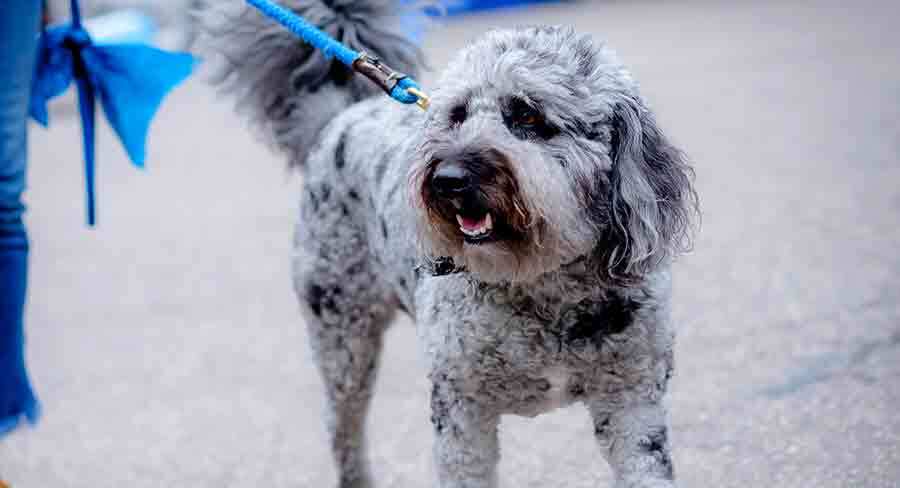
Designated as two separate colors by the ALAA, silver and blue Labradoodles are similar and unusual, as they are produced by recessive genes.
Silver Labradoodles puppies are born black, and develop into shades ranging from light slate to dark charcoal.
Blue Labradoodles are born with a blue/grey skin pigment that develops into a medium to dark smoky blue when they become adults.
Their nose pigment is also blue/grey.
Lavender Labradoodles
Lavender Labradoodles are as lovely and rare as they sound.
They bear a distinctive smoky chocolate hue that gives them a sort of lilac aura.
And they owe their special tint to a cocktail of two recessive coat color types – brown, and dilute.
These pups are born chocolate fade to lavender as they grow older.
Even the nose pigment in the dogs will be rose to match.
Labradoodle Patterns
Labradoodle coat colors aren’t just limited to one all-over shade either. You can get black and white Labradoodles, or even multiple color combinations.
Now let’s look at some of the patterns which can appear within their fur.
Parti Labradoodles
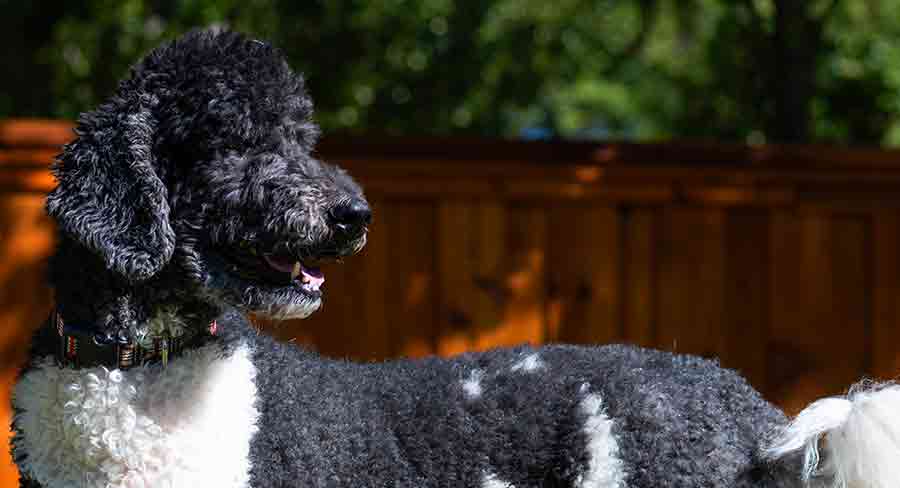
Parti Labradoodles carry the parti gene.
They’re at least half white with spots or blotches of any of the other colors in no set pattern.
Nose pigment will match the solid color.
Phantom Labradoodles
With phantom Labradoodles the majority of the body is one solid color with distinctly defined markings of a second color above each eye, sides of the muzzle, chin, chest, paws and below the tail.
They can be any two colors, but a classic variation is black with gold markings.
Phantom Labradoodles are relatively unusual. But these dogs are born with their markings, so at least you’ll know one when you meet them!
Sable Labradoodles
Rarer yet, is the sable Labradoodle.
These pups are truly unique with each hair having bands of two different colors along it’s shaft.
Brown or black-tipped hairs are found on any solid color, but these dogs are most often tan or red.
Bear in mind that if you plan to clip your Labradoodle’s coat for a more low-maintenance grooming routine, the sable pattern will be lost.
So a sable Labradoodle puppy who has tan fur with black tips will become simply tan once their coat is clipped for the first time. And that might even fade to cream when they mature – a very different overall look to how they started out in life!
Labradoodle Coat Types
As if Labradoodles coats weren’t diverse enough, they also come in different textures and lengths.
Most people think of Labradoodle coats as being similar to the Poodle’s with soft curls that don’t shed much.
But some puppies will be born with straight hair like the Labrador and will shed plenty.
There’s also a fleecy textured coat that falls somewhere in the middle.
As with color, the type of coat a Labradoodle puppy will have can change before they’re fully grown.
Labradoodle Colors
How amazing are the coat colors of the Labradoodle?
Have you chosen a favorite?
Let us know in the comments below.
References and Further Reading
- Armstrong, J., “Color Genes in the Poodle,” Department of Biology, University of Ottawa, 1999
- Buzhardt, L., “Genetic Basics – Coat Color Genetics in Dogs,” VCA Animal Hospital, 2016
- Lofgren, SE, et al., “Management and personality in Labrador Retriever dogs,” Applied Animal Behavior Science, 2014
- van Rooy, D., et al., “Association between coat colour and the behaviour of Australian Labrador retrievers,” Canine Medicine and Genetics, 2019
- Australian Labradoodle Association of America (ALAA)

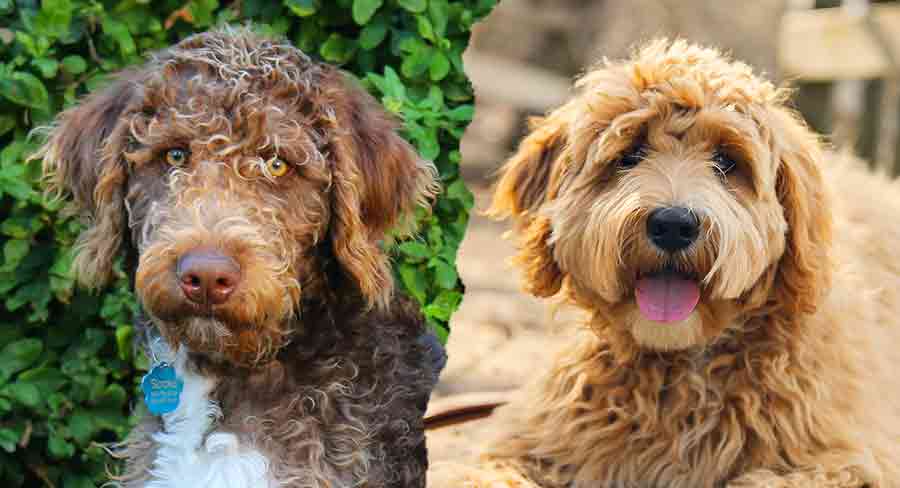
Very informative thanks. So can two golden Labradoodles have a black pup?